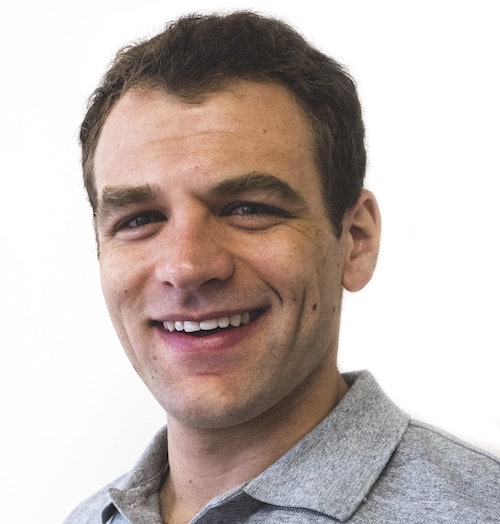No matter where in the United States you live, you’re probably chasing sleep. We mapped the cities with the highest proportion of people spending hours without sleep and included the info below. Chart a course for the stars, count sheep, blanket yourself with white noise. Do whatever it takes to get some shut-eye if you live in one of these top 100 most sleep-deprived cities!
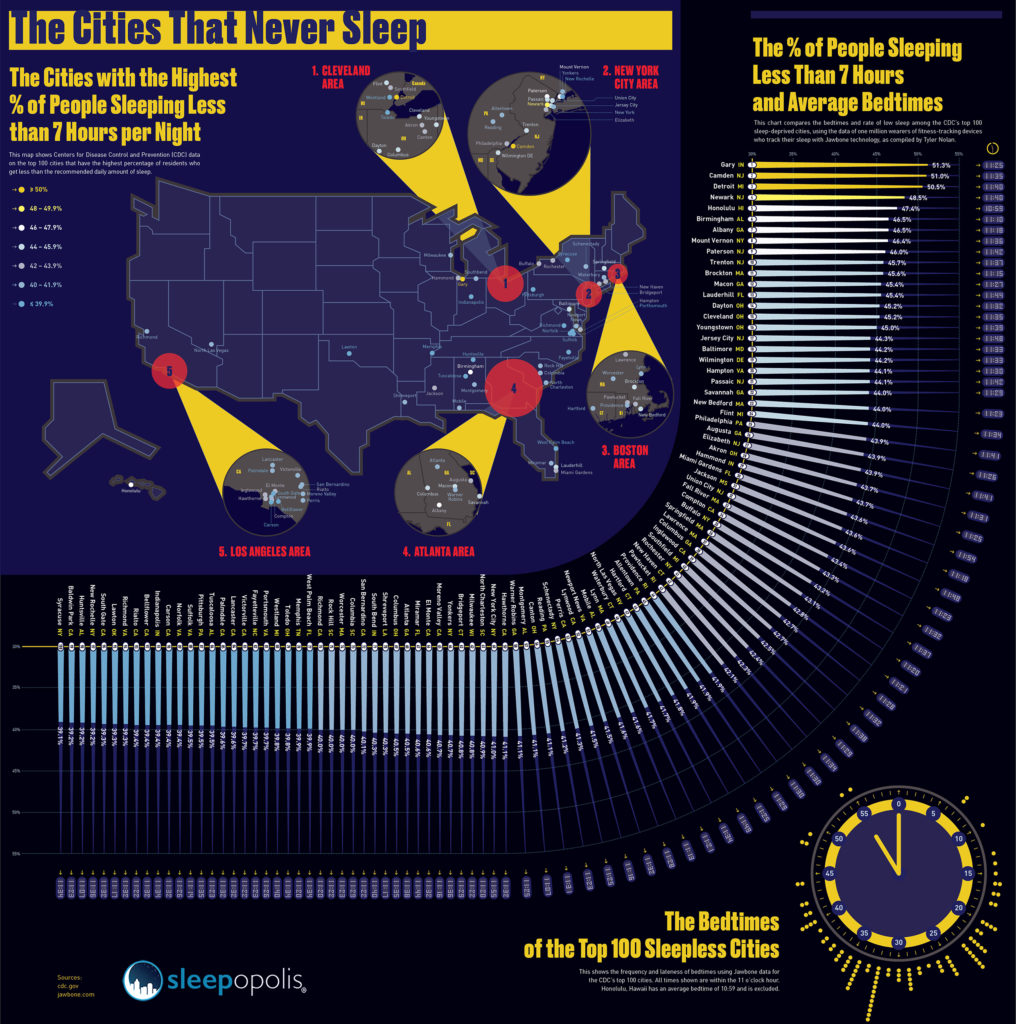
Like this infographic? Consider sharing it with this link or embed on your own site with the embed code below!
The Most Sleep Deprived City Is…
Though pop culture would have us believe New York City is the city that never sleeps, the data on sleeplessness in the United States tells a different story. Despite what all your Manhattanite friends might say, the Big Apple doesn’t even break the top ten. Factoring in raw statistics, the actual number one city lacking sleep is none other than the town made famous by The Music Man: Gary Indiana.
Based on a study taking into account average bedtime and average hours of sleep, over half the population of Gary, Indiana, admitted to getting less than the recommended seven hours of sleep a night. Think about what that means for the overall tiredness of Gary. While we can’t know for sure what’s keeping Gary awake, the hope is that when its fine folks finally do hit the pillow, those hours are restful ones.
Urban, Rural, Doesn’t Matter!
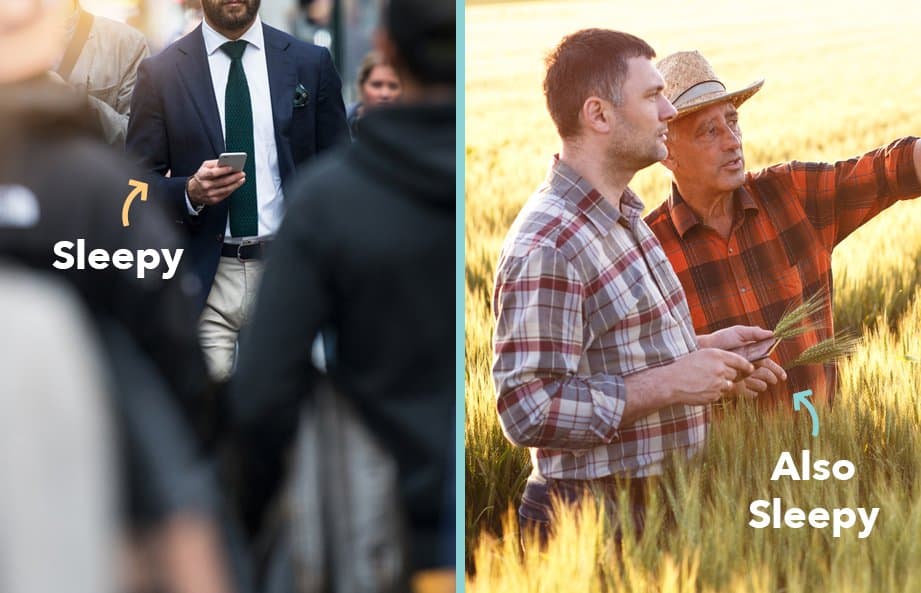
What’s most interesting about Gary’s #1 placement is that it disrupts a fairly conventional belief that it’s harder to sleep in urban environments than rural ones. Cities tend to be louder, brighter, and more polluted than their country counterparts, which would seemingly suggest that they’d also be poorer incubators of sound slumber. However, a 2013 report from the Center for Disease Control found that urban-rural status had little to no effect on one’s ability to get sufficient sleep. (1) In fact, it turns out that most people — no matter the location — aren’t getting enough sleep, period.
All that being said, there is some evidence to suggest that sleeping patterns differ between rural and urban communities. A 2014 study out of Brazil, for example, discovered that while sleeplessness exists in almost every environment, circadian rhythms and sleep patterns do differ between country folk and city dwellers. (2) Specifically, researchers found that rural communities exhibited a predominantly early sleep pattern while urban ones exhibited a much later pattern. Our findings here support those results, which we’ll explore in more detail below.
Up All Night
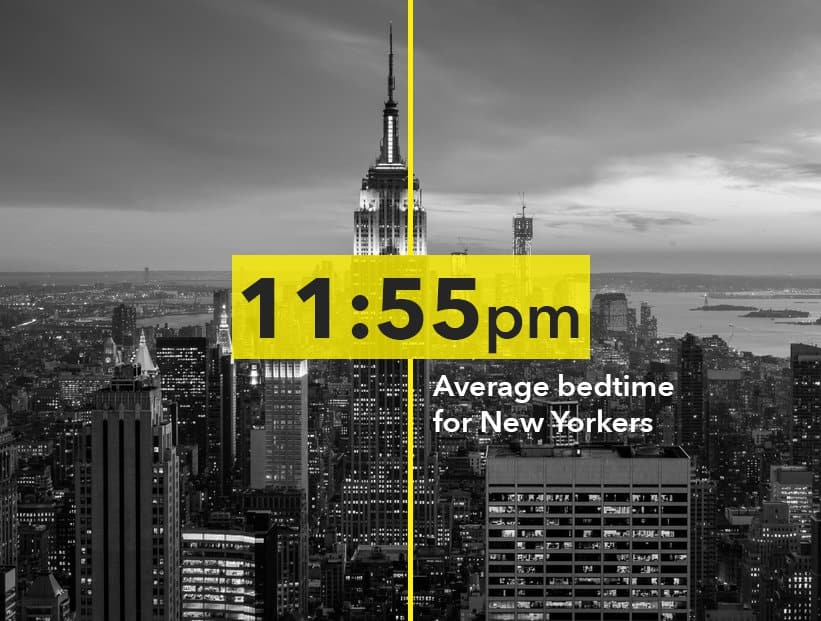
While NYC may not be the most sleep-deprived city, it is the one with the latest average bedtime. According to our survey, most New Yorkers clock out at 11:55 PM, which is just a hair later than folks in Miami, who apparently drift off to dreamland around 11:54 PM every night.
Are such late bedtimes bad? Definitely! Well, kind of. Okay, not really. The key is consistency. Though the data in this survey seems to suggest that the most tired cities are those with average bedtimes between 10:59 and 11:59 PM, there are a myriad of factors that contribute to restlessness. To mitigate the worst effects of fatigue, most experts suggest sticking to the same routine every night.
So, if you like to go to bed at midnight, do it every evening, and make sure you’ve worked it out so you can get in between 6-8 hours of sleep (if you need help planning that out, take a look at our special sleep calculator). You’ll also want to make sure that when you finally do hit the hay, you’re always landing on the absolute best mattress for you. Otherwise, it won’t really matter how well you were able to plan out your twilight hours.
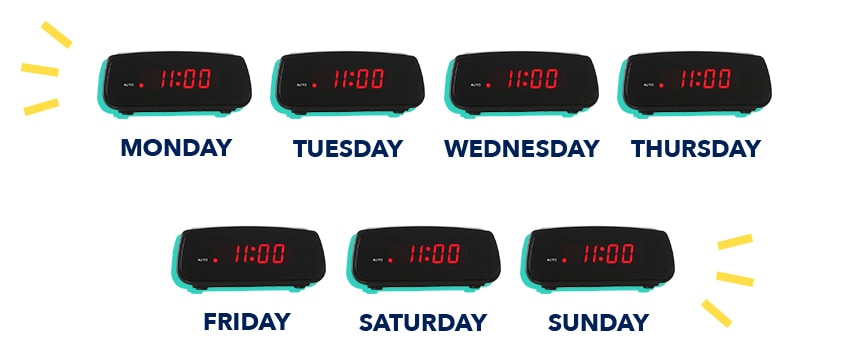
References
- “Health-Related Behaviors by Urban-Rural County Classification – United States, 2013 | MMWR.” Centers for Disease Control and Prevention, Centers for Disease Control and Prevention.
- Carvalho, Felipe Gutiérrez, et al. “Differences in Circadian Patterns between Rural and Urban Populations: an Epidemiological Study in Countryside.” Chronobiology International, U.S. National Library of Medicine, Apr. 2014.



























